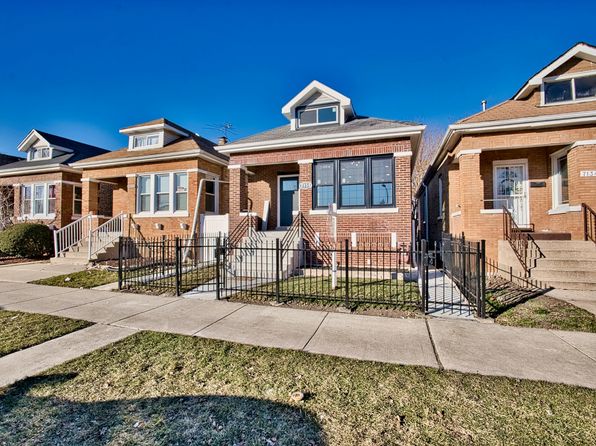West Englewood in Chicago
As one of the 77 community areas of Chicago, West Englewood is situated on the southwest side of the city. Its origins trace back to the days when it was once known as South Lynne. The area is bounded by Garfield Blvd to the north, Racine Ave to the east, the CSX and Norfolk Southern RR tracks to the west, and the Belt Railway of Chicago to the south. Despite being a separate community area, West Englewood’s history and culture are closely linked to the Englewood neighborhood.
The Dawn of West Englewood
The first settlers in the area that later developed into West Englewood were largely German and Swedish farmers who arrived in the 1840s. Following the construction of rail lines for the Rock Island and Wabash Railroads, the area earned the moniker of Chicago Junction, later changing to Junction Grove. This piece of history is commemorated today with the Junction Grove Playlot Park. By 1865, Junction Grove became the unincorporated town of Lake, later renamed Englewood.
Significant Events Shaping the Community
Two significant events led to the population surge in the Englewood and West Englewood neighborhoods. First, the Great Chicago Fire in 1871 razed many neighborhoods to the north. The combination of open spaces for housing and the presence of railroad lines made these neighborhoods an appealing choice for Chicagoans seeking less crowding and relocating from the urban center destroyed in the fire. In 1889, the neighborhoods of Englewood and West Englewood became part of the City of Chicago after the town of Lake was annexed by the city.
The annexation led to the introduction of Chicago street cars, the second factor encouraging development. In 1903, the Englewood Elevated Railway Company erected a branch running roughly along 63rd Street to Loomis, connecting it to the South Side Elevated Railroad. These transportation improvements made the Englewood area an easy commute for workers traveling north to the stockyards, a major employer, and downtown.
Economic Shifts
West Englewood experienced significant economic and racial changes over the decades. The area saw an influx of Italian immigrants following World War I. The railroads and stockyards continued to be important employers. A transit bus barn at 74th and Ashland emerged as a leading employer in the area. The area’s commercial and retail strip ran along 63rd and Ashland Avenue south to 75th street.
By 1920, the community was populated with Germans, Irish, and Italians being most numerous among the foreign-born. In the 1930s, the population of West Englewood continued to grow as more African Americans moved into the area, a trend that accelerated in the 1940s and 1950s with migrants from the rural South.

Post-World War II Industrial Restructuring
Industrial restructuring post World War II led to the massive loss of jobs that residents had depended on: the stockyard operations were moved west, first to Kansas City, Kansas, and eventually, the good-paying jobs in the steel mills also shifted out of the region. Railroads also restructured, causing more loss of union jobs among both whites and African Americans.
In 1960, the median income was close to the Chicago median income, and 12% of the residents were black. During the 1960s and after, advances in civil rights opened more areas of housing to blacks, and they followed other Americans into the further reaches of the city, settling in West Englewood and other southern neighborhoods. The changes in industry, however, meant that skilled workers could no longer achieve middle-class lives.
Education in West Englewood
The Chicago Public Schools district provides educational services to the area. Zoned K-8 schools serving sections of West Englewood include Raldolph, O’Toole, Goodlow, Earle, Henderson, Langford, Bontemps, Woods, Bass, Bong, Guggenheim, and Stagg. Most residents are zoned to the area high school, William Rainey Harper High School, which has served the community for over 100 years; some are zoned to Hope High School or Robeson High School. A small segment to the southwest is zoned to a different high school.
The magnet school, Robert Lindblom Math & Science Academy, located at 6130 S. Wolcott Ave, has received preliminary landmark status from the City of Chicago.
The West Englewood Public Library, located at 1745 W. 63rd Street, is part of the Chicago Public Library system.
Notable Residents
Notable residents of West Englewood include Esther Golar, a member of the Illinois House of Representatives from 2006 until her death in 2015, and Michael E. Hannigan, a member of the Illinois House of Representatives from 1932 until 1969. Other notable figures include Benn Jordan, a modern jazz and electronic musician, and Francis X. Lawlor, a priest and politician known for his segregationist activism.
West Englewood’s rich history and diverse culture make it a unique and integral part of Chicago. Despite economic setbacks and population declines, the community continues to persevere, exemplifying the resilient spirit of its residents. The area’s future will undoubtedly be shaped by the strength and tenacity of its community, contributing to Chicago’s vibrant tapestry of neighborhoods.


